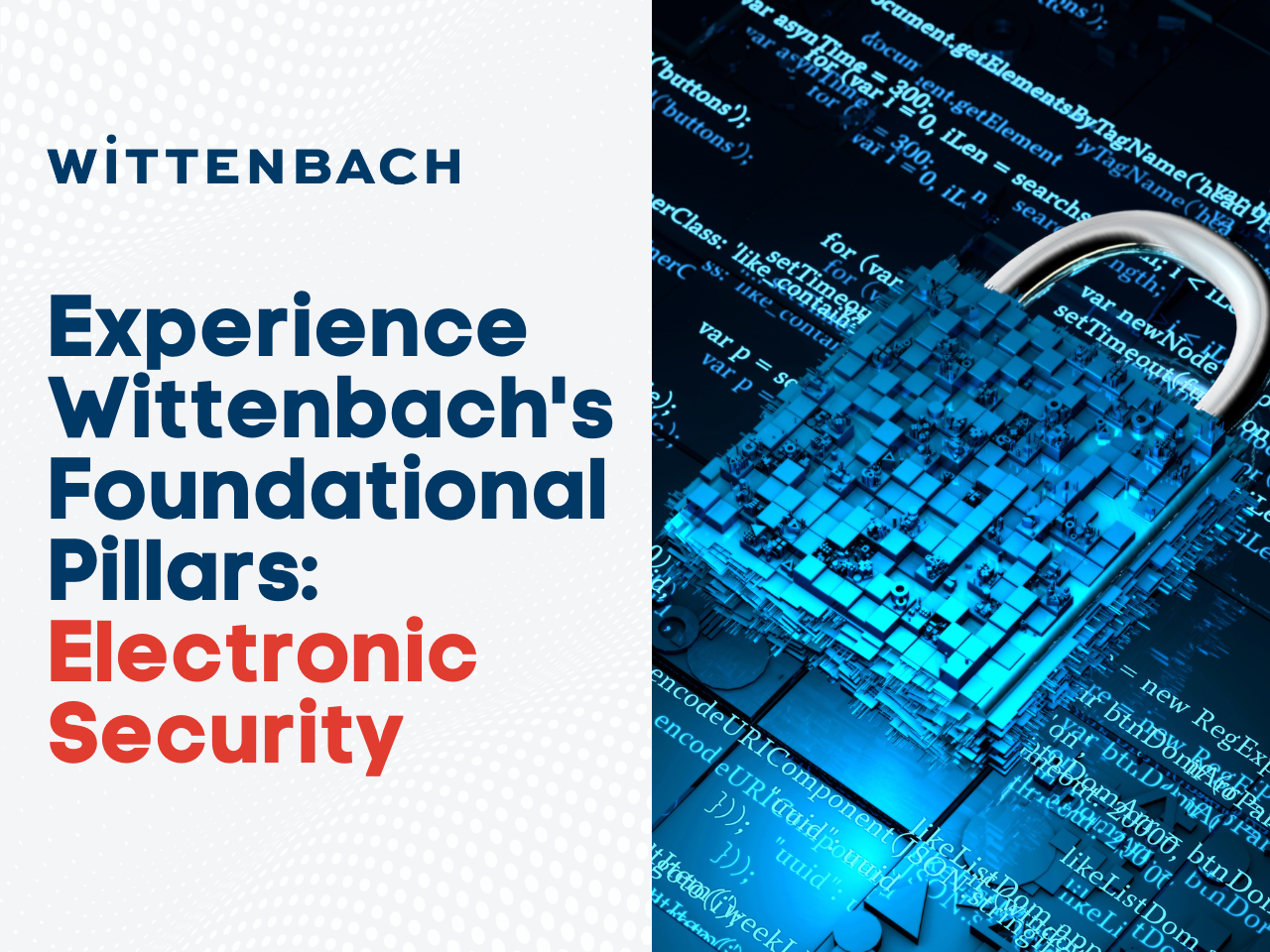Electronic security addresses the financial industry’s need to deter crime, and apprehend the intruders and vandals who disrupt the normal flow of transactions. In an area such as a bank or credit union that processes a high daily volume of cash, sensitive information, valuables, and client traffic, several different kinds of electronic security, such as the DMP Virtual Keypad and Verint EdgeVR 300, can maintain peace of mind.
Why do we focus on electronic security?
Wittenbach’s Marketing Manager Jared Jorgensen says, “Wittenbach embraces Electornic security as pillar of strength because our customers more than ever need to do things more efficiently. Electornic Secuirty helps bring resources such as video recording and access to the cloud and to be managed remotely. Handling security remotely is the most efficient way to handle locations. When customers are able to supervise all of their one locations from one central hub, they can be more proactive and also reactive to security threats.”
Electronic security is Wittenbach’s fastest-expanding area of service. We keep pace with technological innovations and all of the various settings in which electronic security is relevant: banks and credit unions, hospitals, schools and campuses, pharmacies, government buildings, transportation centers, and more. When there is a need for client, asset, and employee security, the products and self-service resources below can provide support.
Intrusion Alarms: These systems are in place to detect unauthorized entry into buildings and other outdoor spaces from would-be burglars or vandals. When choosing an intrusion alarm, you may consider hardwired vs. wireless; the former is the more traditional method, with wires running through your building, while the latter is much easier to install and upgrade. It is also important to choose between an unmonitored intrusion alarm, which triggers a loud noise in order to deter the criminal and draw attention, or a monitored intrusion alarm, which then alerts authorities of the incident. Wittenbach has partnered with Security Central and CheKt to provide two different layers of alarm monitoring, ensuring that if you choose a monitored system, it is expertly staffed around the clock.
Access Control: Access control systems consist of an access point, credentials, readers or keypads, a control panel, and an access control server. Together, these components approve or deny access to buildings and zones, offering an audit trail of all attempted entries. There are three main varieties of access control configuration, including:
- Discretionary access control, in which one main administrator provides access to specific employees and contractors within their company. This is a flexible method, but requires constant attention from the administrator, especially when employees leave the company.
- Managed/mandatory access control, in which IT administrators cannot change access; this is inflexible and intended for the highest levels of security, such as top-secret government buildings.
- Role-based access control, in which everyone in the organization has different levels of access based on their positions. This is governed by job title and employment status.
Wittenbach recommends the DMP Virtual Keypad to allow for access in your facilities, even across geographies. This cloud-based solution makes it much easier to lock and unlock your buildings, manage users, and circumvent the need for a traditional physical keypad that only applies to one building at a time. Our partner Honeywell also has an array of commercial access control products, from control panels to remote security monitoring solutions that can protect large facilities and complexes with ease.
NVRs (Network Video Recorders): This cutting-edge type of surveillance system is the modern evolution of its predecessor, the DVR (digital video recorder). Running on ethernet and storing data to the cloud, it can process large amounts of information at once, including much sharper images from its cameras than ever before. An NVR system such as the Verint EdgeVR 300 can include indoor and outdoor surveillance, located just in one branch or business or across multiple geographies. The initial expense is higher than a DVR system, but the return on investment is tangible as NVRs are much more adept at detecting suspicious activity and identifying would-be criminals who seek to steal money or vandalize property.
IP Cameras: IP (Internet Protocol) cameras are married to NVR systems, offering the latest in criminal detection and deterrence. They are the eyes of this surveillance system, and can be mounted virtually anywhere, as they do not require the multiple wires that their analog predecessors do. These cameras are high-resolution, run on a wireless network, and can store footage to a cloud server instead of a local drive–making your security footage conveniently accessible from any device, anywhere in the world. The most modern IP cameras, such as those made by Verint, are compatible with facial recognition software and also offer a virtual pan-zoom-tilt (PZT) feature to keep a keen watch over all corners of your branch or building.
Facial recognition technology: This is used on a small scale to unlock phones and other devices, but in the context of a financial institution, it can integrate with an NVR system to catch criminals faster than ever before. In a recent blog post, we outlined that facial recognition technology is useful both on the interior and exterior of your branch, protecting the building and ATMs (automated teller machines) and ITMs (interactive teller machines). Most commonly facial recognition occurs through a high-resolution IP camera, which then scans the images against a database of faces to determine a match. In the event of crime, this can drastically cut down the time it takes law enforcement to apprehend the culprit. Wittenbach partner Verint’s FaceDetect video analysis solution accounts for environmental and circumstantial factors, as well as disguises and changes in age.
Three resources to learn about electronic security
- This video illustrates Wittenbach’s watchful alarm monitoring services, powered by partners Security Central and CheKt. It provides a visual of how the services work, monitoring your property either 24/7 or at specific times, depending on your preference. When an intruder or unexpected motion occurs, video is sent to a highly trained operator who can verify whether the source was criminal activity, then notifying authorities if needed.
- This collection of educational videos offers insight into NVR systems; developed by Verint, this curated list of tech tips explains how to configure your NVR monitor layout, how to access live and recorded video, and how to effectively configure surveillance properties.
- This playlist offers guidance on the DMP Virtual Keypad app, which can be helpful mobile component of your access control system. Learn more about notification configuration, arming and disarming your system from your mobile device, panic features, and more.
The pace of electronic security innovation is swift, so choosing products and services that are cloud-based and easily upgraded will allow your branch or business to stay protected against intruders and vandalism. Exploring and adopting new features of the products you already own, as well as training your staff on said features, helps to prevent crime and drives your employees to act confidently and correctly if an emergency were to arise. Contact Wittenbach today to learn more about how to optimize your financial institution’s electronic security suite!





